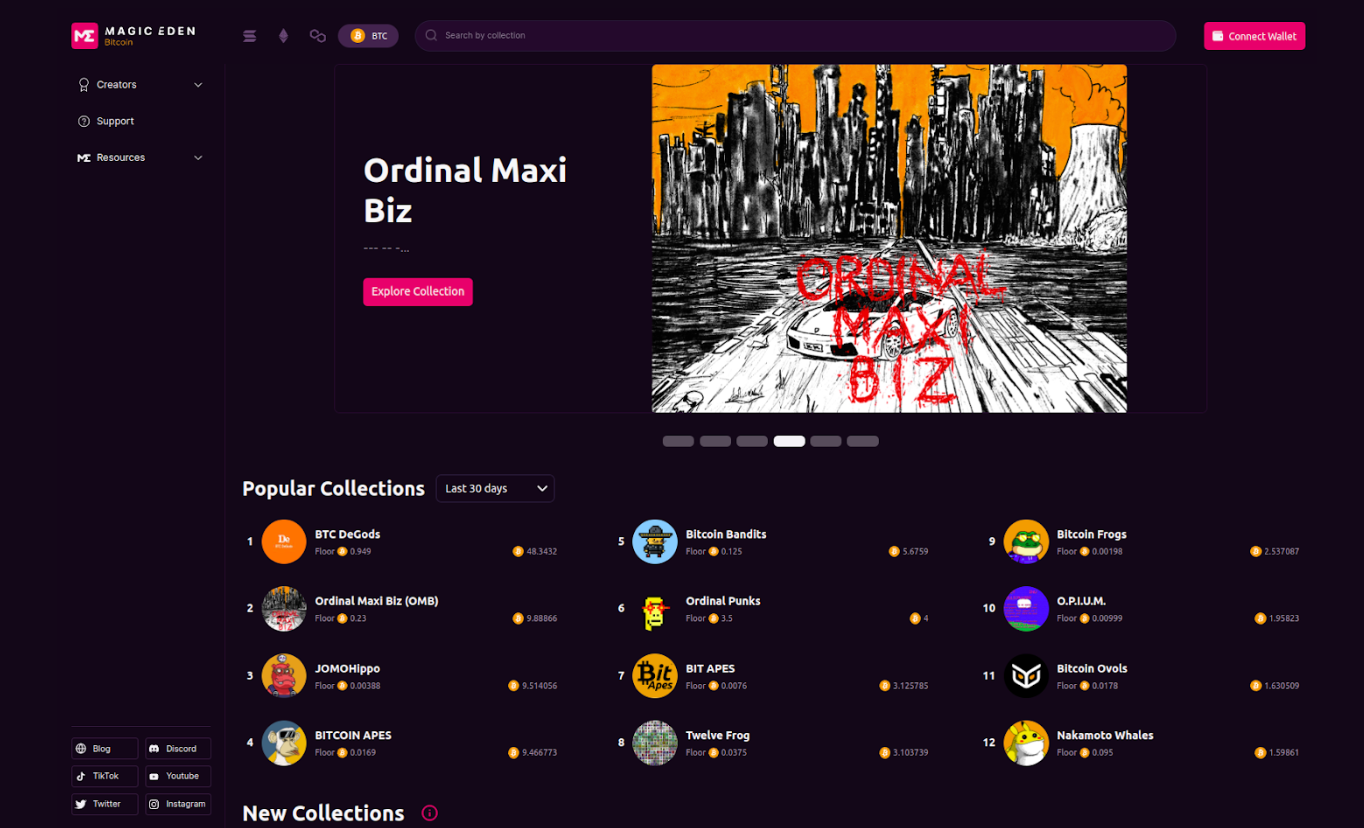Bitcoin NFTs - Understanding Ordinals and their Functionality

The advent of Ordinals has sparked a massive surge in the popularity of Bitcoin. Throughout the month of April 2023, the Bitcoin network experienced an unprecedented increase operations with users flooding the network with a diverse array of content, ranging from captivating artwork to immersive video games.
Ordinals, comparable to Non-Fungible Tokens (NFTs), represent digital assets meticulously engraved on satoshis, the smallest units of Bitcoin (BTC). This revolutionary inscription process, named after the pseudonymous creator of Bitcoin, Satoshi Nakamoto, has become possible through the Taproot upgrade implemented on the Bitcoin network on November 14, 2021.
Ordinals are a novel form of non-fungible tokens (NFTs) designed to operate on the Bitcoin network. Unlike other NFTs typically built on Ethereum or other blockchains,

Unpacking the Functionality of Ordinals
At the core, Ordinals are designed to represent ownership or proof of uniqueness for a digital or physical asset. They leverage the Bitcoin network's robustness to ensure a tamper-resistant, verifiable record of ownership, and rarity.
Let's break down how Ordinals work:
1. Creation and Minting:
The process begins with the creation or "minting" of the Ordinal. Artists, creators, or even businesses can create an Ordinal that represents a specific digital asset. Each Ordinal is unique, carrying specific metadata and attributes tied to the asset it represents.
2. Ownership and Transfer:
Once minted, Ordinals can be bought, sold, or traded much like other NFTs. The ownership details are recorded on the Bitcoin blockchain, ensuring that transfers are transparent and verifiable.
3. Interoperability:
One of the significant advantages of Ordinals is their interoperability. They can interact seamlessly with other platforms and ecosystems, broadening their usability and appeal.
What are Inscriptions?
Ordinals, similar to NFTs, allow individual satoshis to be engraved with content like images, music, or video games on the Bitcoin network. Developed by Rodarmor, these "Digital Artifacts" or "Inscriptions" differentiate themselves from NFTs on other networks. They offer advantages of ownership, immutability, resistance to censorship, and independence from third parties.
Since Inscriptions are stored directly on the Bitcoin ledger, the developer claims they are superior to other NFTs as they do not rely on third parties, making them more ownable, immutable, resistant to censorship, and not requiring anyone's permission for their use.

The inscription process consists of two phases: a transaction that establishes the conditions for storing the inscription's content, and a second transaction that fulfills the conditions to reveal the content on the inscription's ledger.
Why are Ordinals Significant?
Ordinals' significance lies in their ability to provide a new layer of functionality to the Bitcoin network. Here's why they matter:
Enhancing Digital Scarcity:
Ordinals amplify the concept of digital scarcity. By tokenizing digital assets on the Bitcoin blockchain, they reinforce the uniqueness and rarity of these assets.
Empowering Creators:
Ordinals enable artists and creators to monetize their work in a new way. They can sell their digital art or creations directly to their audience, retaining more control and profits.
Fostering Innovation:
Ordinals open up new avenues for innovation. They can be used in various applications, including digital collectibles, virtual real estate, gaming, and more.
The Future of Ordinals and Bitcoin
As the first major implementation of NFTs on the Bitcoin network, Ordinals represent a significant step forward in the broader adoption of Bitcoin in the NFT space. Their introduction broadens the possibilities for creators, collectors, and investors alike.
Given Bitcoin's widespread adoption and security, Ordinals could potentially attract a more extensive user base, thus accelerating the growth of the NFT marketplace.
While it's still early days, there's no denying that Ordinals have the potential to disrupt the NFT landscape. As they continue to evolve, they could pave the way for a more diverse, inclusive, and innovative digital economy.

